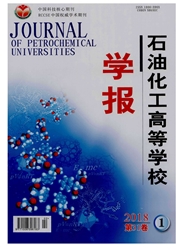

 中文摘要:
中文摘要:
准噶尔盆地西北缘风城地区白垩系油砂储量丰富,油砂油粘度极高,其分布受多重因素影响,其中沉积微相对油砂分布的影响最为显著。笔者综合利用岩心分析、测井资料、薄片鉴定、分析化验等资料,结合砂、砾岩展布特征,在对清水河组细分层的基础上重新对各层的沉积微相进行划分,并建立测井微相模式,分析白垩系各砂层组的沉积微相类型、分布规律及演化模式。研究表明,白垩系清水河组主要发育砂岩沉积的辫状河三角洲和砾岩沉积的扇三角洲两类沉积体系,三角洲前缘水下分流河道、辫状河心滩、河道砂体是油砂矿的主要储油砂体,也是油砂的有利聚集区。研究结果为进一步指导风城地区白垩系油砂矿藏的勘探与开发奠定了良好的基础。
 英文摘要:
英文摘要:
The Cretaceous oil sand resources reside in the Fengcheng area, northwestern Junggar Basin. The present paper focuses, in terms of core and thin section examination, well logs and laboratory data, on the type, distribution and evolution of sedimentary microfacies and construction of the sedimentary model for the Cretaceous Qingshuihe Formation. Two depositional systems are recognized in the Cretaceous Qingshuihe Formation: braided delta and fan delta depositional systems. The delta front subaqueous distributary channel, braided channel bar and channel sandstones are favourable for the accumulation of oil sands. The results of research in this study may provide useful references to the future exploration and development of the Cretaceous oil sand deposits in the Fengcheng area.
 同期刊论文项目
同期刊论文项目
 同项目期刊论文
同项目期刊论文
 期刊信息
期刊信息
